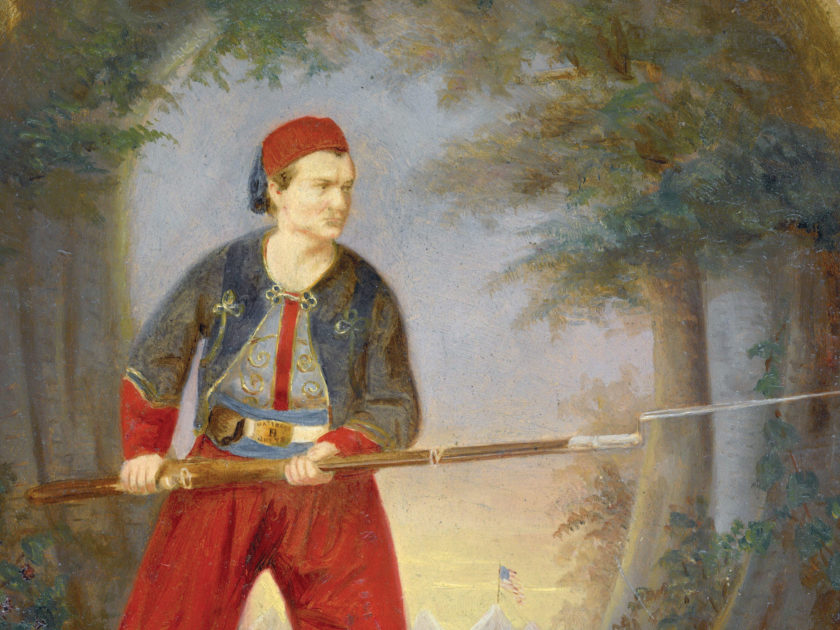By Michael J. McAfee
The 1860 East Coast tour of Chicago’s United States Zouave Cadets, led by Elmer E. Ellsworth, proved an immense public success as it passed through some of the major cities of New York.
Though the Cadets inspired many volunteer companies and regiments to dress or simply name themselves as Zouaves, its impact upon the dress of the New York State Militia apparently had limited effect. Perhaps this was due to the expense of adopting new uniforms, coupled with hostilities, which began within months of Ellsworth’s tour.
The multi-buttoned Zouave Cadet uniform jackets inspired the hybrid chasseur/Zouave uniform of Brooklyn’s 14th Regiment. But it refrained from the elaborate ornamentation of the Chicago militiamen. After the Zouave Cadets passed through Syracuse, N.Y., the men of the 51st New York State Militia adopted a light blue uniform with Zouave style jackets. Even one company of the venerable 7th Regiment drilled in Zouave-style trousers for a short-lived experiment. Ellsworth’s uniforms however, begat true imitation within the 13th Regiment, like the 14th, also from Brooklyn.
The 13th Regiment formed during the late 1840s following a reorganization of the militia system in New York. The state recognized that the common militia was not a reliable military force. The militia, comprised mostly white males between the ages of 18 and 45, met once a year for what had become a drunken holiday. As a result, the uniformed volunteer militia companies were consolidated into new regiments. For most of the next decade, these companies continued to wear their individual uniforms within the new regiments. Eventually, state authorities sought more regimental uniformity.

The 13th reached such a goal by 1860. And then, along came Ellsworth. It is not clear exactly when Company B of the 13th reverted to type and added a gaudy Ellsworth-style uniform to its wardrobe. The change occurred sometime during the war. At one point, even the regiment’s colonel was photographed in a Zouave jacket. Most of the regiment, however, stuck to the gray uniforms they adopted before the war. Later in federal service, the regiment dressed in federal blue to avoid deadly confusion. By 1864, new state-issued blue militia uniforms had replaced the regiment’s gray clothing.
Today, we have good evidence of the abortive Zouave dress of Company B, not only in the overpainting of this accompanying albumen photograph, but also in an extant uniform.

MI Senior Editor Michael J. McAfee is a curator at the West Point Museum at the United States Military Academy, and author of numerous books. He has curated major museum exhibitions, and has contributed images and authoritative knowledge to other volumes and projects. The images pictured here are from his collection.
SPREAD THE WORD: We encourage you to share this story on social media and elsewhere to educate and raise awareness. If you wish to use any image on this page for another purpose, please request permission.
LEARN MORE about Military Images, America’s only magazine dedicated to showcasing, interpreting and preserving Civil War portrait photography.
VISIT OUR STORE to subscribe, renew a subscription, and more.

